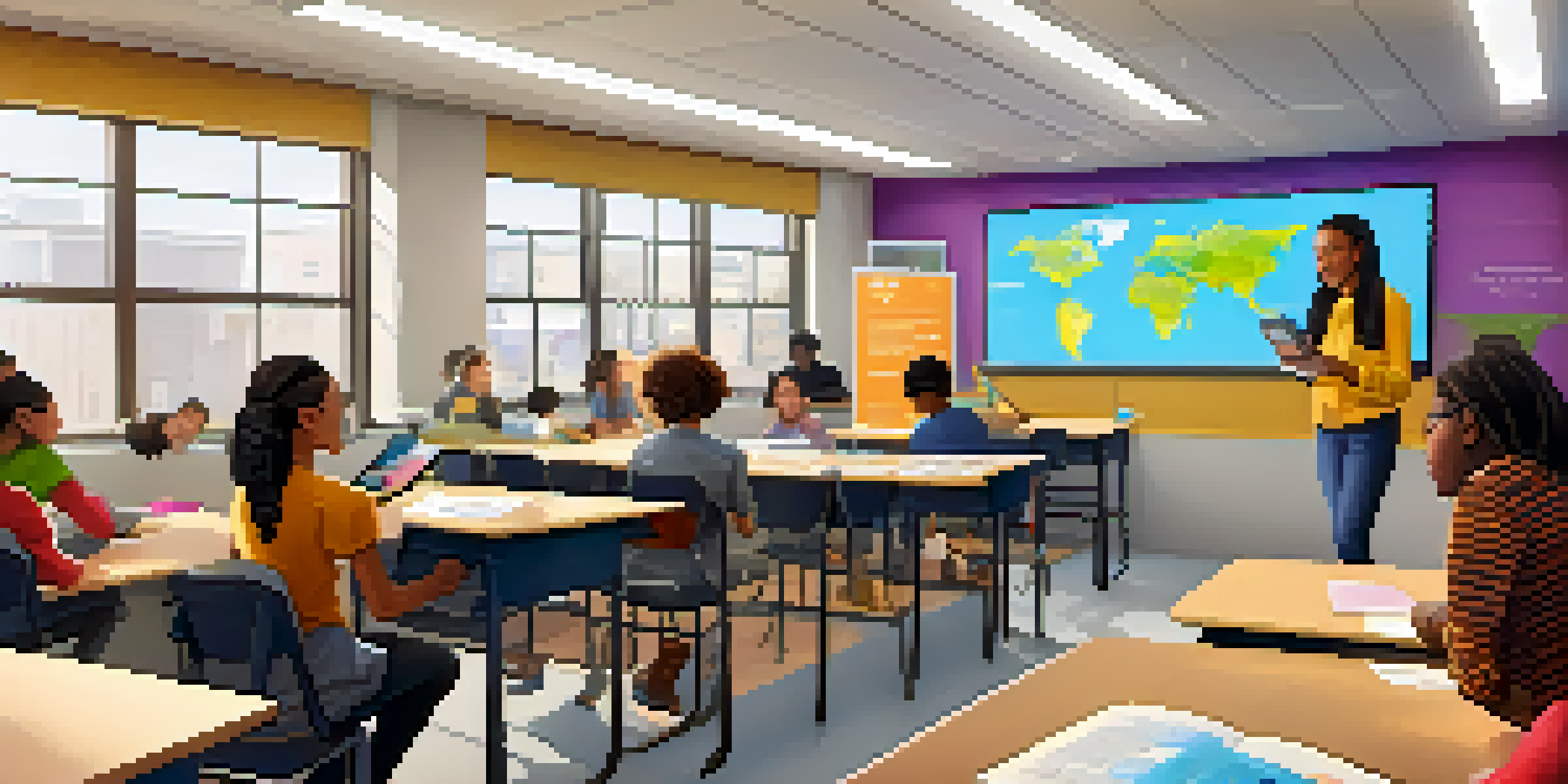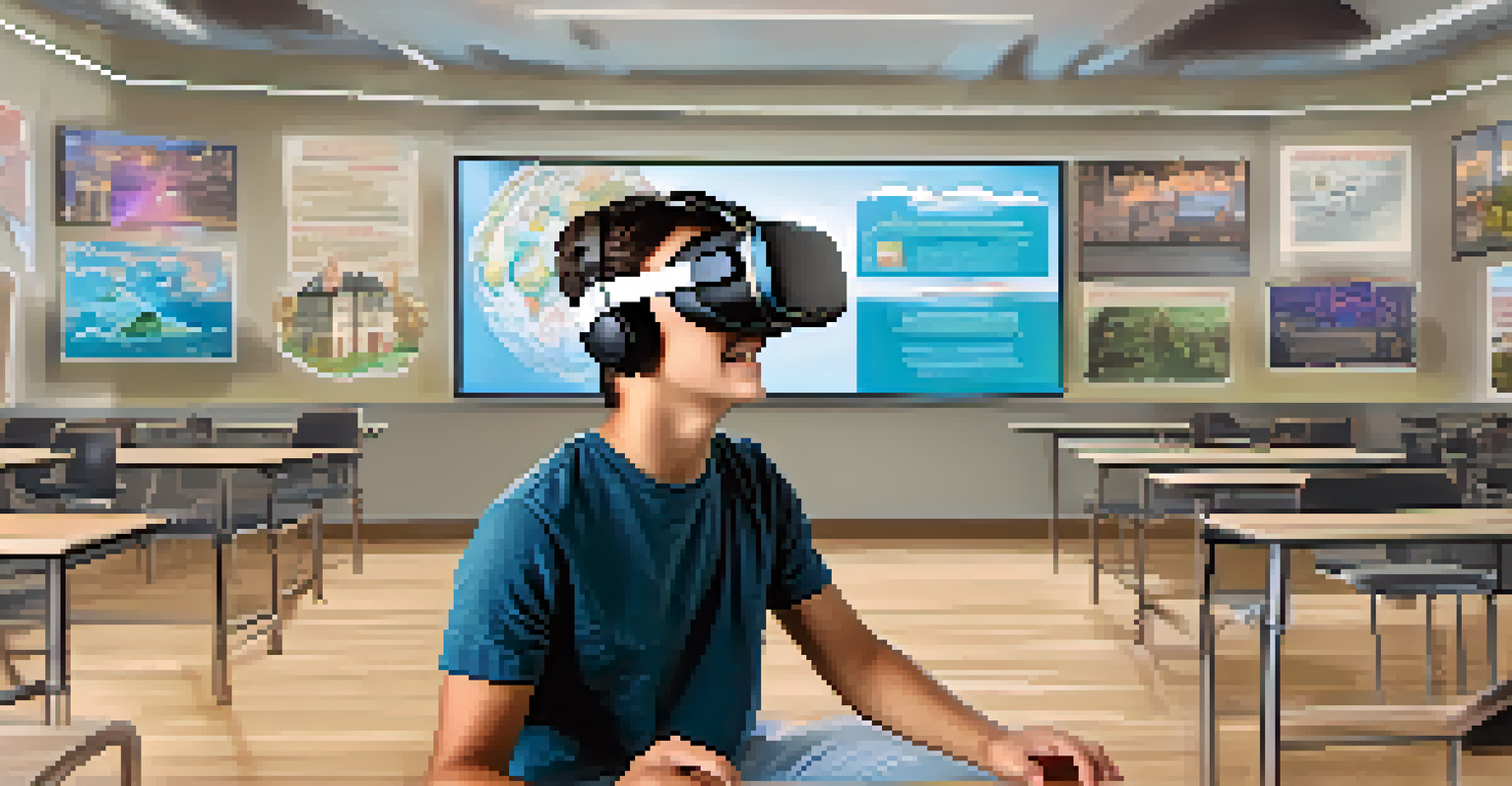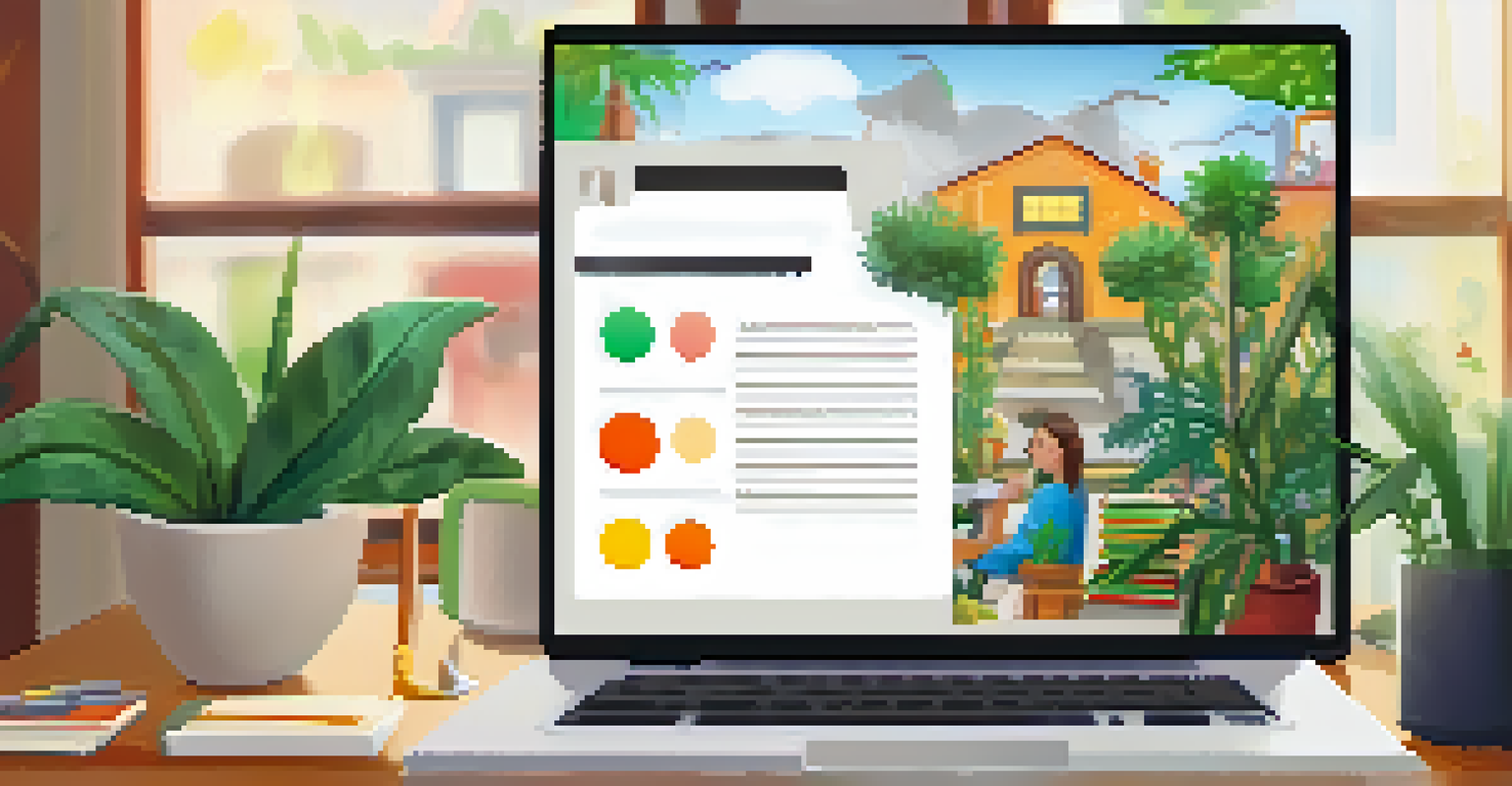Blended Learning Models: Tailoring Approaches for Diverse Needs

Understanding Blended Learning: A Quick Overview
Blended learning combines traditional face-to-face instruction with online learning. This mix allows for a more flexible and personalized approach to education, catering to different learning styles. By integrating technology into the classroom, students can engage with materials at their own pace, which can lead to deeper understanding.
Blended learning is an approach to education that combines traditional classroom methods with digital tools and resources, providing a more personalized learning experience.
Imagine a classroom where students can learn the theory behind a topic in person and then practice it online through interactive modules. This method not only enhances engagement but also provides opportunities for collaboration. It’s like having the best of both worlds, allowing students to thrive in a supportive environment.
As educators adopt blended learning, they are finding creative ways to tailor their approaches. This adaptability is key, especially in today's diverse educational landscape, where one-size-fits-all solutions simply don't work.
The Benefits of Blended Learning for Diverse Learners
Blended learning offers a multitude of benefits, especially for students with varying needs. For instance, auditory learners can listen to lectures online, while visual learners might benefit from videos and interactive graphics. This personalized experience helps ensure that every student can grasp the material in a way that resonates with them.

Additionally, blended learning fosters independence and self-motivation. Students can take charge of their learning, revisiting concepts they find challenging without the pressure of keeping up with their peers. This autonomy is crucial for building confidence and competence in their skills.
Blended Learning Enhances Engagement
By combining online and in-person instruction, blended learning creates a flexible, interactive environment that caters to diverse learning styles.
Moreover, blended learning can bridge gaps caused by different educational backgrounds. By providing multiple resources and learning paths, all students have the opportunity to succeed, making education more equitable and accessible.
Key Models of Blended Learning: An Overview
There are several models of blended learning, each catering to different educational environments. The Rotation Model, for example, allows students to rotate between online and in-person learning at designated times. This model is effective in balancing direct instruction and independent work, ensuring engagement.
The future of education is not about the technology; it's about the teaching and learning that can happen when technology is used effectively.
Another popular model is the Flex Model, where online learning is the backbone, and in-person sessions are offered as needed. This approach is particularly beneficial for older students who may have more control over their schedules and learning preferences. It’s akin to building a custom learning path that fits their lifestyle.
Lastly, the Enriched Virtual Model combines online coursework with scheduled face-to-face sessions. This model encourages students to complete most of their work online while still benefiting from direct interaction with instructors. It’s about creating a tailored educational experience that meets individual needs.
Tailoring Blended Learning for Special Needs Students
Students with special needs require tailored approaches to learning, and blended models can be particularly effective. By integrating assistive technologies and personalized content, educators can create an inclusive environment. For example, using speech-to-text software can help students who struggle with writing.
Moreover, the flexibility of blended learning allows for adjustments in pacing. Students can take their time with challenging topics and revisit content as needed, which is essential for those with learning disabilities. This personalized pacing fosters a sense of achievement and encourages a love for learning.
Personalization Benefits Diverse Learners
Blended learning provides tailored educational experiences, allowing students to learn at their own pace and access various resources.
Collaboration with specialists is key in this process. By working closely with special education professionals, educators can design blended learning programs that address specific challenges, ensuring that every student receives the support they need to thrive.
Engagement Strategies in Blended Learning Environments
Engagement is crucial in blended learning, and there are many strategies educators can employ to keep students active and interested. Interactive elements such as quizzes, discussion forums, and collaborative projects can make online learning more dynamic. These activities create a sense of community and encourage learners to connect with one another.
Gamification is another effective strategy, where elements of game design are incorporated into learning. This approach can transform mundane tasks into exciting challenges, motivating students to participate actively. Think of it as turning education into an engaging adventure, with rewards for achievements.
Regular feedback is also essential in maintaining engagement. By providing timely and constructive feedback, educators can guide students in their learning journeys, helping them stay motivated and focused. This continuous loop of feedback and improvement enhances the overall educational experience.
Challenges of Implementing Blended Learning Models
While blended learning offers numerous benefits, it does come with challenges. One major hurdle is ensuring that all students have access to the necessary technology and resources. Schools must work to bridge the digital divide, providing devices and reliable internet access to those who need it.
Another challenge is the need for adequate training for educators. Teachers must be equipped with the skills and knowledge to effectively implement blended learning strategies. Without proper support, even the best models can fall short, leading to frustration for both educators and students.
Challenges in Implementation Persist
Despite its advantages, blended learning faces challenges such as technology access, educator training, and maintaining balance between online and in-person learning.
Finally, maintaining a balance between online and in-person learning can be tricky. Educators must carefully design their curricula to ensure that both components complement each other, creating a cohesive learning experience. This balance is essential for maximizing the effectiveness of blended learning.
Future Trends in Blended Learning Models
The landscape of blended learning is continually evolving, with new trends emerging that promise to enhance the educational experience. One significant trend is the increased use of artificial intelligence (AI) to personalize learning paths. AI can analyze student performance and recommend resources tailored to individual needs, making learning more efficient.
Additionally, the rise of virtual and augmented reality (VR/AR) is set to transform blended learning. Imagine students exploring ancient civilizations through VR while also engaging in discussions during in-person sessions. This immersive experience can deepen understanding and spark curiosity.

As blended learning continues to grow, so will the emphasis on social-emotional learning (SEL). Educators are recognizing the importance of addressing students' emotional needs alongside academic goals. By integrating SEL into blended models, schools can foster a more holistic approach to education.